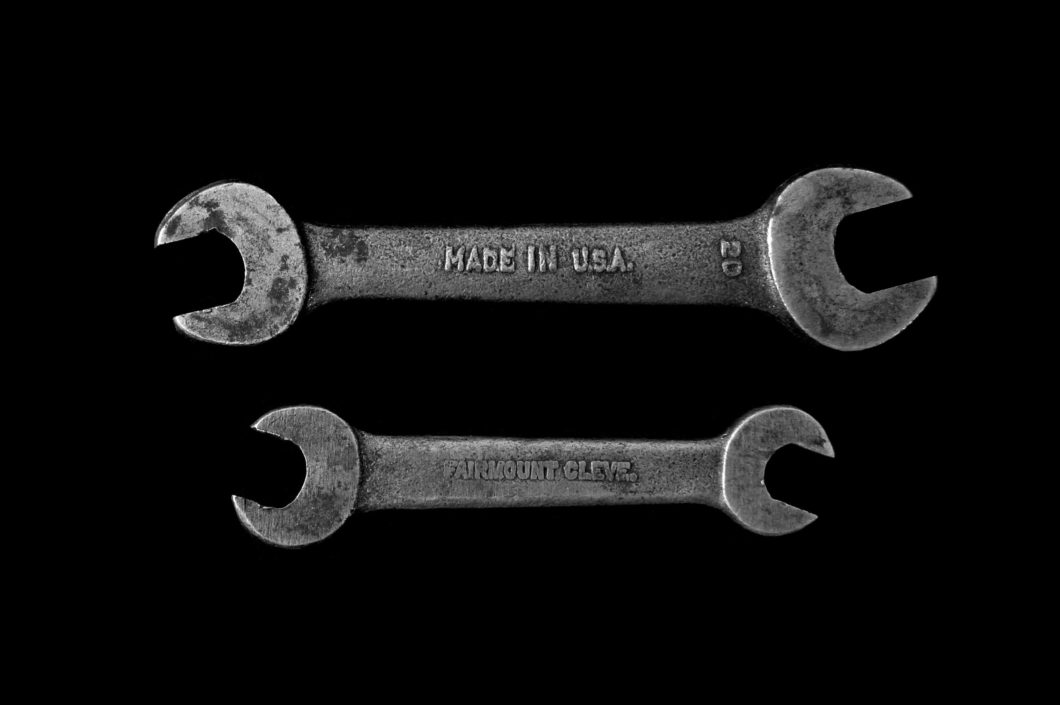As I wrap up my second year of taking a break from a traditional career, I’m meeting with some entrepreneurs who are building interesting companies. I thought it would be beneficial to answer some of the commonly asked questions that I get in a series of blog posts over the next few months. We are also hosting a Pop Up Business School in February, so the topics of starting and growing businesses are very top-of-mind for me.
When you start a company, you may feel the need to project an image of strength to your initial prospective customers. When I meet with tech startups, I often get a version of this question: Should I try and appear to be a “big” tech company or should I highlight the excitement of a startup?
You Care More Than They Do
One thing to keep in mind is that you worry about things way more than your prospective customers will. This includes the topic of scale.
After about six months of starting our software company, we rented a vacant former Walmart store, as our office. It was a huge, 32,000-square-foot building with loud rumbling roof air conditioners, stained carpet, and no conference rooms or offices. It was essentially a cave.
We moved 18 people into that space, and it looked so funny with our workstations all huddled together in the center of the “office.” (We obviously had big plans to grow!)
Somehow we were able to attract large insurance company prospects early on, and when one of them announced that they were coming to visit us in our new space, I panicked. I stood at the front door and peered into our building. I thought, “When these guests walk in here they are going to think we are some fly-by-night outfit that could be rolled up and out of here in 30 minutes.”
Since we were targeting stable, long-standing insurance company prospects, I was worried that our newness would work against us.
Before the meeting, we went out and bought a huge reception desk and put some large live plants in heavy pots around it. We even had folks bring in some computers from home and spread out papers, 32 ounce drink cups, newspapers, at empty workstations to make it appear like more activity was going on at our company. We ended up having a great meeting with that prospective company and they became a fantastic customer (and still are after 19 years!). Years later I shared that story with the executives of that company, and we all had a good laugh. They knew how small we were. They were attracted to our newness, passion, early technology, and even the fact that they would be first to market with this new capability.
Eventually I became comfortable with it and used the open space as a patio. That “empty” space became the soul of the company. A platform for fun, communication, celebrations.
Before we knew it we had 240 people crammed in there; the patio had been swallowed by folding tables filled with engineers. We bought land and built a campus.
Early Adopters Are Attracted to the Early Advantage
It’s helpful to keep in mind that your early customers will be attracted to your nimbleness, speed, flexibility, and most of all the advantage your new offering brings to their business.
This phenomenon is best described by the foundational work by Geoffrey Moore in his book Crossing the Chasm. I used this book as my strategy guide for the first several years of growing our company (and for the five years prior to starting the company, when all I had was an idea).
In Crossing the Chasm, Moore defines the stages of market adoption of a new product and the customers who are attracted to each stage:
The chasm is a mysterious but very real aspect of any new market. We did a lot of thinking about it—and planning to get over it. (Keep an eye out for future posts on my blog on how to navigate the peculiarities of each stage.) For this topic, it’s helpful to realize that the first two stages—Innovators and Early Adopters—represent customers who are drawn to a new product and/or company specifically because it is new. They know the company is small and therefore they believe they will be getting something unique.
The Chasm is wedged between these early customers and the eventual majority of companies who will make up the market as it matures. This mass market is looking for a strong and stable company to purchase from, and thus showcasing your scale and expanding customer base will be vital when in these stages. However, you only gain the opportunity to win them after you are successful with the Innovators and Early Adopters.
The key to success is to use whatever you have at the time to your best advantage. When you are starting out, your ability to move quickly, adapt, and focus on a few customers is a huge advantage. Don’t try and act like you have more customers than you do. Trust that the right customers will come your way and will value the intense focus you can give them.
I’ve seen some startups begin life with a ton of venture capital. Their strategy is to launch with a big splash and portray a sense of inevitability. Generally, they’re founded by people who have had a big success prior and are backed by large venture funds wanting to make a statement.
This is a very small group of companies and a very specific strategy. I think it’s fine as long as it is funded properly and there is reason to do it that way. One example would be Workday, which was founded by the same people who had founded and sold Peoplesoft. Their strategy was to do it again and go get their former customers. It worked spectacularly.
However, if that isn’t your funding level nor your strategy, then don’t feel pressure to act differently than who you are. Don’t be the politician who has a focus group voting on what color suit to wear. Dress yourself in your own clothes. If bold, then be bold. If quirky, then quirk it up!
As you add early customers you will naturally establish a sense of momentum. As that develops, you can begin to weave it into your sales messaging. It takes some time for this to come together, and you’ll naturally feel a lot of pressure to portray yourself in that next level of growth. That is a healthy pressure, but you can’t let it compromise your authenticity. It is a delicate balance but you always want to err on the side of being authentic.
If someone doesn’t buy from you because you don’t have 200 customers and 100 associates, then let them go. If you win them under false pretenses, then you’ll have trouble keeping them anyway.
At the same time, I’ve seen companies share too much info. If you are having some struggles scaling, you don’t have to walk into a sales meeting all blurry eyed and share how your website keeps crashing and how mad everyone is at you. Part of your role is to buffer the internal pain with the external expression of your company. Err on the side of authenticity, even if it costs you, but don’t puke up all your troubles on everyone you meet.
Borrow Your Customers’ Tenure and Size
In the book, Blueprint to a Billion, the author identifies a strategy called “Leveraging Big Brother Alliances.” Essentially, you can borrow the halo of your customer and portray it to your prospective customers.
When a large company first learns about you, they will naturally want to know where you’re located, who owns the company, how long you’ve been around, etc. Don’t be defensive with those answers. Welcome every person who wants to learn more about your company.
When you’re able to share a sizable customer name with your prospective market, it solves all sorts of questions. Companies know there’s safety in numbers. They know if someone at an established company did the due diligence on your company and went through the purchasing and contracting process, then chances are you are a reasonably safe bet.
You don’t want to overplay this hand. You only need to mention it a few times and then move on. Your product and team needs to bring the value, so spend your time explaining those things.
Size and Scale When Recruiting Your Team
It was always interesting to me to listen to the reasons people gave for joining my company. When we started and had only a few people, I often heard that people were attracted to our company because they felt like they could make a difference in a smaller company.
Yet even when we had gone public, had over 2,000 associates globally, I still heard essentially the same thing. People would leave huge companies and come to work with us because we were small, at least from their perspective. They would come from a company with 50,000 or even 100,000 employees to our company because they felt they could make a difference.
People would also leave because we would get too big for them. I remember when we crossed 200 associates, someone came in and resigned because the company was getting too big. They wanted to know everyone at the company and it was no longer possible.
Don’t fight that stuff. Don’t try and pretend to be something other than who you are at that point in time.
A company is like a person. It’s born small and has all sorts of needs. It grows through the toddler years and eventually can do things on its own. It becomes a teenager and eventually an adult. Each stage is to be cherished and loved. Just like one of your children, you would never want to freeze them in place, nor would you want it to skip the critical phases of growth.
I always tell people to take lots of pictures of their team, their celebrations, their travels. Each phase is special and unique, and you’ll look back on them as milestones. Enjoy the uniqueness of each phase and trust that you will attract the right customers and right team members for each step of the journey.

